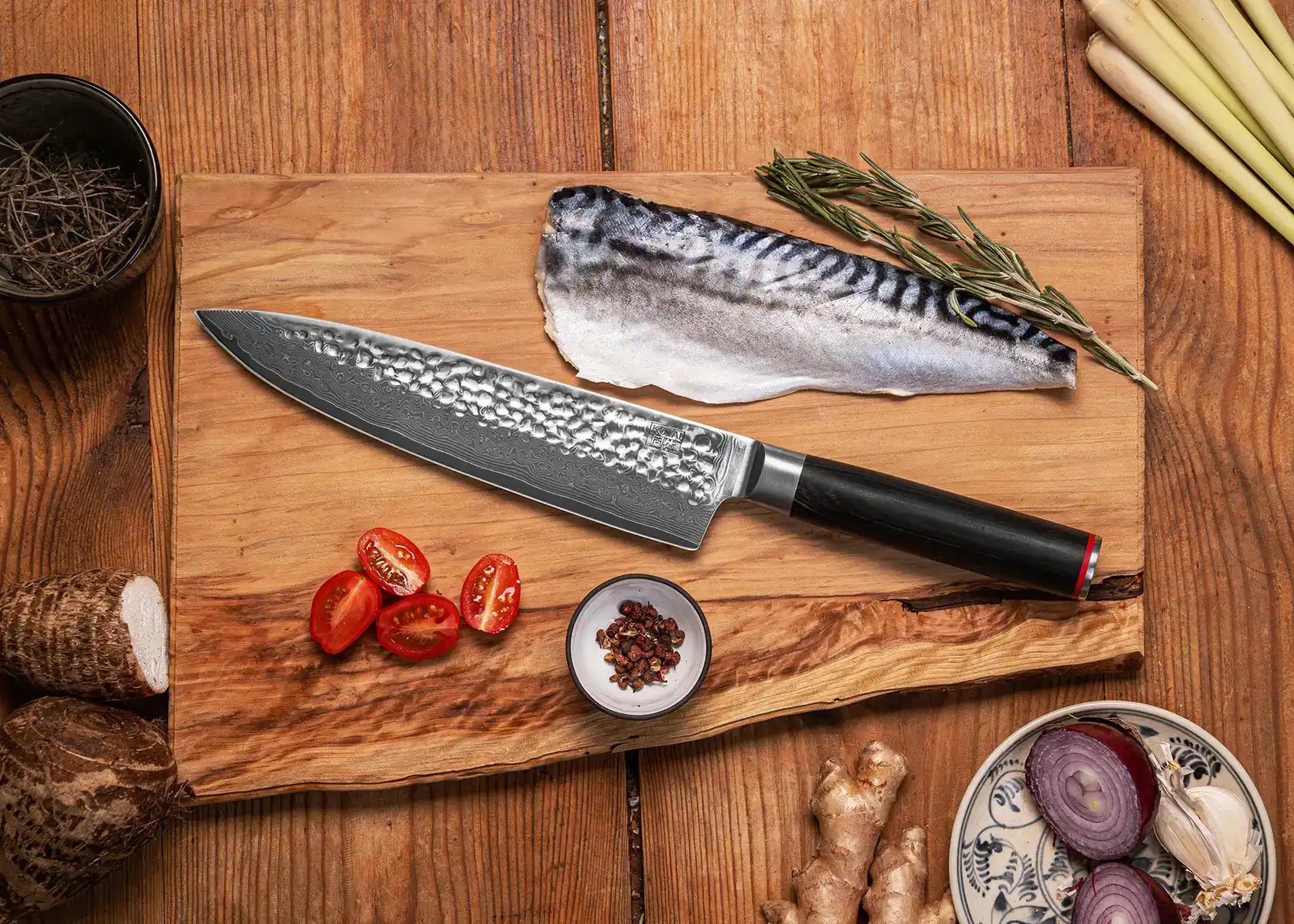The ladder pattern Damascus knife has captivated culinary professionals around the globe, seamlessly combining stunning aesthetics with outstanding functionality. These knives are crafted through an intricate forging process, presenting not just effective culinary tools but also true works of art. In the demanding realm of cooking, the choice of knife can dramatically influence both efficiency and creativity.
Diving into the rich history and artistry behind the ladder pattern Damascus knife can deepen your appreciation for these extraordinary instruments. From the intricate designs etched into the blade to the feel and performance while handling it during both delicate and challenging tasks, the appeal is truly irresistible.

What Makes the Ladder Pattern Special?
The unique ladder pattern is created through a specialized forging technique that layers various types of steel. When etched, this layering reveals an enchanting design that mimics the rungs of a ladder. This innovative method serves not only aesthetic purposes but also enhances the knife's strength, sharpness, and longevityqualities essential for kitchen professionals who rely on dependable tools for accurate and efficient food preparation.
Performance Meets Aesthetics
The combination of functionality and beauty makes the ladder pattern Damascus knife a highly sought-after item in any professional kitchen. Its design enables it to retain sharpness, even with high-volume usean indispensable feature for chefs operating in bustling environments. Additionally, its visual charm can enhance the kitchen atmosphere, providing both a practical tool and an eye-catching centerpiece.
A Deep Dive into the Craftsmanship
The production of a Damascus knife demands expert craftsmanship, rooted in a heritage rich with tradition. For those curious about the ancient techniques that birthed these patterns, a [detailed exploration of the history of Damascus steel](https://www.tms.org/pubs/journals/JOM/9809/Verhoeven-9809.html) offers a fascinating look into the evolution and importance of these blades.
The Practicality of Ladder Pattern Damascus in Modern Kitchens
For culinary professionals, selecting a knife goes beyond mere aesthetics; its usability determines its worth in daily cooking scenarios. The ladder pattern Damascus knife shines in its balance and maneuverability, which enables chefs to execute precise cuts effortlessly. This efficiency translates to reduced fatigue during extended preparation sessions, ultimately enhancing both productivity and accuracy.
Maintaining Your Knife's Integrity
To ensure the longevity and performance of your Damascus knife, proper care is essential. Regular honing and thorough cleaning are critical practices. For an extensive guide on maintaining Damascus steel and its history, visit [Damascus steel care](https://knives.shop/blogs/my-blog/is-wartech-a-good-knife-brand).
Comparative Advantage Over Common Knives
In comparison to typical stainless-steel alternatives, Damascus knives provide superior edge retention as well as sharper blade angles. It's crucial for kitchen professionals to consider these benefits when investing in tools that will enhance their cooking capabilities.
Choosing the Right Damascus Knife
With a myriad of choices available, making an informed selection is vital. Important considerations include the knifes balance, feel, and intended purpose, ensuring it aligns with the specific requirements and personal preferences of the chef. The knife's design should also complement your kitchen aesthetics, integrating seamlessly into your culinary experience.
Exploration of Different Patterns
While the ladder pattern holds prominence, delving into alternative patterns can expand your toolsets versatility. Exploring various styles can equip you with a diverse array of knives that cater to numerous culinary demands. To delve deeper into different Damascus pattern types, check out the [medieval origin of Damascus steel](https://www.medievalware.com/blog/damascus-steel-origin/).

Frequently Asked Questions
What is the primary benefit of a ladder pattern Damascus knife?
The main advantage lies in its exceptional blend of sharpness, durability, and beauty, making it a vital tool in professional kitchens.
How often should I sharpen my Damascus knife?
While recommendations may vary, its generally advised to hone your Damascus knife regularly and perform complete sharpening every few months based on usage.
Can I use a Damascus knife on any cutting board?
Its best to use your Damascus knife on wooden or plastic cutting boards to avoid dulling the blade too quickly.
This article contains affiliate links. We may earn a commission at no extra cost to you.


























